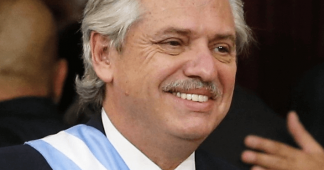Dean Baker is a Senior Economist at the Center for Economic and Policy Research (CEPR)
Cross-posted from the CEPR Blog
Earlier this month, Dr. Peter Hotez announced that his team of researchers at Texas Children’s Hospital and Baylor University had developed an effective vaccine against the coronavirus. In limited clinical trials, it showed effectiveness comparable to the mRNA vaccines produced by Pfizer and Moderna and better than the Johnson and Johnson and widely used AstraZeneca vaccines.
What makes this development so important is that Hotez is making his vaccine freely available to the world. Anyone who has the necessary expertise to produce it is free to do so without worrying about patent monopolies or other intellectual property claims. They are also freely sharing the technology, not claiming industrial secrets like Pfizer and Moderna.
The production process is also fairly simple. An Indian manufacturer is already producing 100 million doses a month. Many other facilities can likely be quickly configured to produce the vaccine. With no patent rights, the vaccine is cheap. Hotez estimated that it can be produced for $1.00 to $1.50 a shot. That compares to prices around $20 a shot for the mRNA vaccines. At these prices, purchasing 2-4 billion vaccine doses to immunize the unvaccinated in the developing world should be a very small lift compared to the trillions of dollars and millions of lives the pandemic has cost the world.
At the moment, it is not clear that the Hotez vaccine figures prominently in the plans of the international aid organizations providing vaccines to the developing world or to the governments of the United States and other wealthy countries funding these efforts. Part of the hesitance can be justified by the fact that the vaccine has not undergone a large-scale clinical trial to more precisely determine its safety and efficacy.
However, this objection should be soon overcome. India has given the vaccine an emergency use authorization. With the vaccine’s widespread use in India, it should be possible to compile enough data to assess its safety and effectiveness in the not distant future.
The other issue is a more serious one. The fact that the vaccine is cheap and the technology is being open-sourced is likely a strike against its widespread adoption by major international organizations. The United States and other rich countries are worried about the threat of a good example.
Open-Source Versus Patent Monopolies
The United States, along with other wealthy countries, has long relied on government-granted patent monopolies to finance most of the costs of developing new drugs, vaccines, tests, and other medical devices. The logic is that corporations will be willing to spend large amounts of money, in often risky research, if they have the prospect of large profits when they have a successful product.
While everyone acknowledges the value of government-funded research through the National Institutes of Health (NIH) and other agencies, most of this funding goes to more basic research. The idea is that somehow, if the government was involved in the later phases of the development and clinical testing process the money would be mostly wasted. (Operation Warp Speed is a useful counter-example to this view. The government essentially picked up all of Moderna’s development costs, as well as the cost of its clinical trials.)
There are many problems with relying on patent monopolies to finance medical innovation. The most obvious is the price of drugs and other products enjoying patent monopoly protection. Drugs are almost invariably cheap to produce and distribute. However, the patent monopoly allows drug companies to charge markups, that are many thousand percent above the free market price, for drugs that may be essential for people’s health or even their life. In a patent-free world, drug affordability would be a non-issue, except for the very poor. In a world where patent monopolies can allow drug companies to charge tens, or even hundreds, of thousands of dollars for their drugs, affordability is a huge issue.
But the problem goes beyond just dealing with high prices. As every economist knows, when the government interferes in a market to keep the price up (by granting a patent monopoly), it creates perverse incentives. The most obvious is the incentive to promote drugs as widely as possible, even if it means misrepresenting their safety and effectiveness.
To be clear, companies always want to sell more of their products; that is how they make money. But they have far more incentive to bend the rules or break the law when selling drugs with markups of several thousand percent than when they are selling plastic forks or paper plates at markups of 20 or 30 percent.
This is a substantial part of the story of the opioid crisis, where several major drug companies paid billions of dollars in settlements based on allegations that they misrepresented the addictiveness of the new generation of opioid drugs. More recently, we have the case of Aduhelm, an Alzheimer’s drug of questionable safety and effectiveness. Biogen, the drug’s manufacturer, was hoping to sell it for $54,000 for a year’s dosage. The drug was approved by the FDA, reversing the decision of its advisory panel. The biggest problem in assessing the drug’s usefulness is that so many of the experts in the area have received money from Biogen, so it’s not clear whose opinions can be trusted.
To protect their patent monopolies, drug companies will spend tens of millions of dollars on legal fees to harass potential competitors. This can mean, for example, pushing dubious patent claims that a less-established or generic company lacks the resources to contest.[1]
Patent holders can also effectively pay off potential generic competitors to stay out of the market. While an explicit payoff is illegal, a drug company can certainly make a deal with a potential generic competitor to manufacture one of its drugs. If the generic company decides to drop plans to introduce a generic competitor to the brand company’s patented drug, it would be difficult to prove in court that this was not just a coincidence.
The corruption from patent monopolies gets into all areas of health care policy. The pharmaceutical industry always ranks near the top in lobbying expenses and campaign contributions. Huge amounts of money are at stake with the government’s decisions on patent and pricing policy, as well as decisions on approving and buying drugs in programs like Medicare and Medicaid.
Perhaps the worst part of the story is that patent monopolies are likely to impede the research progress. Its impact takes different forms. First, the existence of large patent rents for a particular drug is likely to lead competitors to try to find ways to innovate around the patent to get a share of the rents. While it is generally desirable to have multiple drugs for a condition (some patients may react poorly to a particular drug), resources will generally be better spent attempting to find drugs for conditions where effective treatments do not already exist rather than developing the fourth, fifth, or sixth drug in an area, with the hope that a company’s marketing division can get them a large cut of the profits.
The desire to protect intellectual property claims can also prevent potentially productive collaborations. It doesn’t do a pharmaceutical company any good if it has a great breakthrough with a partner, but the partner is able to claim patent rights. The New York Times just ran a lengthy piece on the decades of research that allowed for the rapid development of the mRNA vaccines. At one point, it noted how the leading researchers in the field were unable to arrange a collaboration because of disputes over ownership of patents.
This problem is likely common. The point of the research being done by pharmaceutical companies is after all is to get a patentable product. Developing drugs or vaccines that may save lives and improve public health is secondary.
The Open-Source Alternative
There are many different ways to fund open-source research. My preferred route would be long-term government contracts, with large grants going to prime contractors, who would then be expected to subcontract with smaller firms where appropriate. (I outline this system in chapter 5 of Rigged [it’s free].)
Military contracting provides a loose model for this approach. While there is much waste and fraud in the system of military contracting, this system for biomedical research has the huge advantage that while much military research is secret (often for good reason), everything would be fully open in this system.
If a major contractor with a large grant didn’t seem to be producing anything, it would quickly be apparent to researchers around the world. If Pfizer or Merck got $5 billion over a decade to research diabetes drugs, and had nothing to post after a year or two, it would be apparent to researchers around the world that something was wrong. If the story proved to be outright fraud (e.g., the top executives of the company had all bought themselves huge vacation homes), then the contract would be canceled, and the people responsible would be prosecuted. If it turned out that they were just incompetent, then the company would surely never get another research contract.[2]
The big advantage of going this route is that all research findings would quickly be available to researchers everywhere. They could build on successes and learn from failures. We would not be seeing the problem noted in the NYT piece on developing mRNA vaccines, where cutting-edge research was not shared because of disputes over ownership of patents.
And, since all research findings were fully public, no one would have the incentive or the ability to mislead other researchers or clinicians about the safety and effectiveness of drugs, as happened with opioids. With everything on the table for all to see, it would be difficult to perpetuate a lie of any consequence.
The other huge advantage of going this route is that drugs, vaccines, tests, and everything else developed through this system would be cheap. This would make providing access to the best technology in developing countries a far more doable task. It would even make a huge difference in rich countries like the United States. Instead of spending $500 billion a year on prescription drugs, we would be spending closer to $100 billion.
The Danger of the Hotez Vaccine
I have argued for years for the benefits of an open-source funding system along the lines discussed here and in Rigged. But, even if this is really a great idea, as I believe, no one would envision throwing out a functioning system, however wasteful and corrupt, for an unproven idea. The obvious route for going from the current system to an open-source system would be to take small steps with little downside risk.
This is exactly what Peter Hotez and his team of researchers did with developing their coronavirus vaccine. They were able to arrange enough funding from various sources to cover the research costs. They are now prepared to make it available to the world without conditions. If further research supports their initial findings, the world will have a cheap, effective vaccine that can quickly be produced in sufficient quantities to vaccinate the world.
That would be a huge deal and a great success for the open-source model. It would likely lead to demands for more public funding of open-source research. It may also help to pressure philanthropies—that claim to be concerned about public health—to fund research on an open-source model. Needless to say, it would also be very bad news for the profits of Pfizer and Moderna, and other drug companies that hoped to make billions off of COVID-19 vaccines.
Given the widely recognized value of government-funded basic research through NIH and other agencies, it would require a very strange view of scientific progress to think that government funding of downstream research would be just throwing money in the toilet. But the best way to disprove this view is to produce results for an open-source model. Dr. Hotez has done that, and the whole world needs to know.
[1] There is an important asymmetry in legal battles between a patent holder and a generic competitor. The patent holder is fighting for the right to be able to sell a drug at patent monopoly prices, meaning markups of many thousand percent. The generic company is fighting for the right to sell the drug in a free market, with markups that may be less than one-tenth as large.
[2] To answer an obvious question, we would need some international agreement to share research costs worldwide. There would be problems negotiating such a deal. However, anyone who has followed recent trade negotiations knows that we have had enormous problems negotiating and enforcing international rules on protecting patents and other forms of intellectual property.
Published at braveneweurope.com
We remind our readers that publication of articles on our site does not mean that we agree with what is written. Our policy is to publish anything which we consider of interest, so as to assist our readers in forming their opinions. Sometimes we even publish articles with which we totally disagree, since we believe it is important for our readers to be informed on as wide a spectrum of views as possible.










